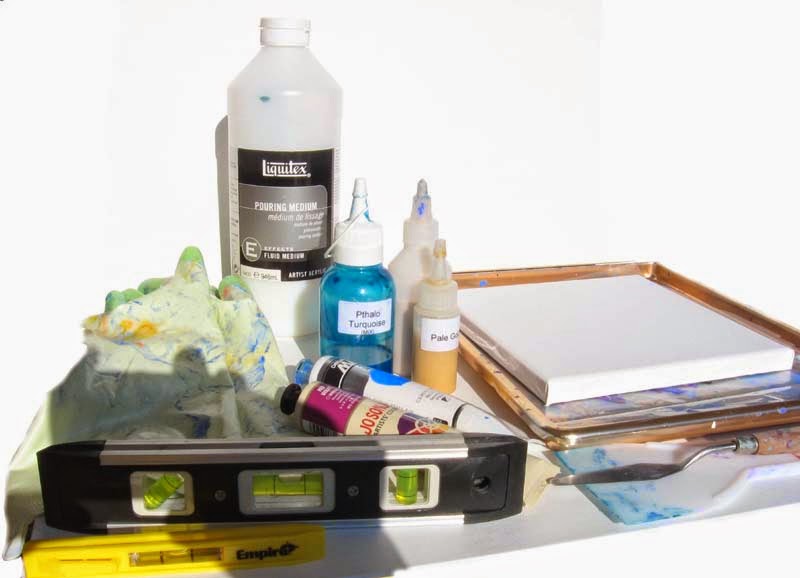 |
| Untitled Acrylic paint pre-mixed with Liquitex Airbrush Medium on 8x8x1/2 inch (20x20x1.3cm) stretched canvas |
 |
| Close up Acrylic Pour using Liquitex Airbrush Medium & Water |
Close up at right shows some of the ridges from the painting underneath and how the paints have flowed, mixed and cracked when dry.

